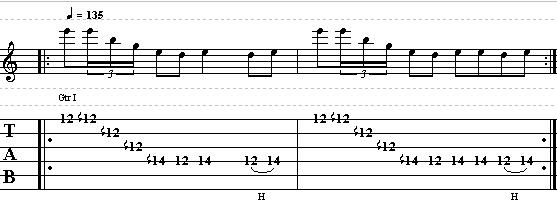Hey, how’s it going?
My name is John McClennan and I’m here
today with guitarcontrol.com, bringing
you this guitar lesson blog. Today I’d
like to talk about the importance of bending in tune.
Let’s just start from the beginning here
and talk about bending. When you bend a
string what’s actually happening is you’re
raising the pitch. So let’s take, for example,
this note here on the 10th fret of the 2nd string.
It’s an A. And let’s say I want to bend a whole
step or a full step, which means two frets.
So that 10th fret is going to sound like the
12th fret. I’m going to bend this note into that note.
You want to be able to hit that note and know
right where in-tune is. You don’t want to be
over, like… Or under… You want to just go
right to that note. Let’s say you were playing
this over a G chord, you’d have… There you are,
just hitting the note right into where it’s supposed
to be in tune.
So here’s a trick. Pop on your guitar tuner and
check yourself. This will be an A natural and
this would be a B, and just see if you can get
it in-tune and then also you’re training your ear.
You want to be able to hear right where in-tune is
and have your hand just have that sort of default
response and know where it is.
The other thing that you can do is you can also bend
a half step, which would be like this. One fret, 10th
fret now sounding like the 11th fret. So you have this chord.
Finally, you can add vibrato. So if I go back to,
say, my major chord here, G major whole step bend…
And then you just shake it. But try and get it in-tune
first and have the control to hold it there. Then you
can add the vibrato. Vibrato is sort of another topic.
But regardless of what style you’re into, there’s a
lot of guitar styles that require a good string bend.
So it’s something that you want to develop and not
push aside because it takes some control to be able
to do that and hit one note and make it sing.
Anyway, thanks for watching and we’ll see you in
the next video.



